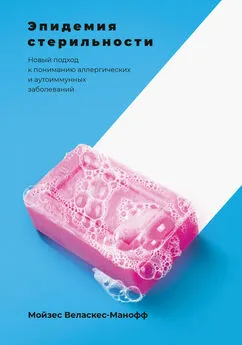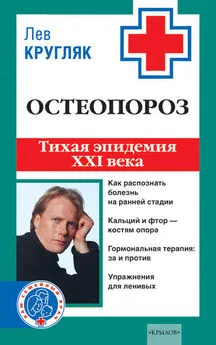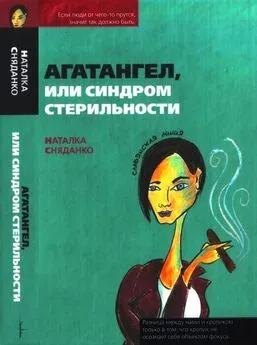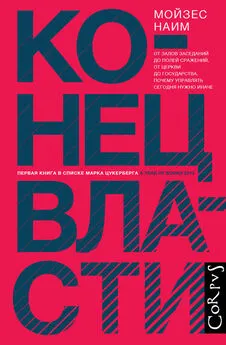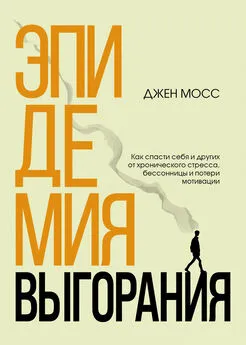Мойзес Веласкес-Манофф - Эпидемия стерильности
- Название:Эпидемия стерильности
- Автор:
- Жанр:
- Издательство:Манн, Иванов и Фербер
- Год:2019
- Город:Москва
- ISBN:978-5-00117-706-7
- Рейтинг:
- Избранное:Добавить в избранное
-
Отзывы:
-
Ваша оценка:
Мойзес Веласкес-Манофф - Эпидемия стерильности краткое содержание
Эпидемия стерильности - читать онлайн бесплатно ознакомительный отрывок
Интервал:
Закладка:
185
Matteo Fumagalli et al. “Parasites Represent a Major Selective Force for Interleukin Genes and Shape the Genetic Predisposition to Autoimmune Conditions”. Journal of Experimental Medicine 206, № 6 (2009); Matteo Fumagalli et al. “The Landscape of Human Genes Involved in the Immune Response to Parasitic Worms”. BMC Evolutionary Biology 10 (2010).
186
Matteo Fumagalli et al. “Signatures of Environmental Genetic Adaptation Pinpoint Pathogens as the Main Selective Pressure through Human Evolution”. PLoS Genetics 7, № 11 (2011); Gopalakrishnan Netuveli et al. “Ethnic Variations in UK Asthma Frequency, Morbidity, and Health-Service Use: A Systematic Review and Meta-analysis”. Lancet 365, № 9456 (2005).
187
P. N. Le Souëf, P. Candelaria, J. Goldblatt. “Evolution and Respiratory Genetics”. European Respiratory Journal 28, № 6 (2006).
188
John A. Jenkins, Heimo Breiteneder, E. N. Clare Mills. “Evolutionary Distance from Human Homologs Reflects Allergenicity of Animal Food Proteins”. Journal of Allergy and Clinical Immunology 120, № 6 (2007).
189
Cecilia Emanuelsson, Michael D. Spangfort. “Allergens as Eukaryotic Proteins Lacking Bacterial Homologues”. Molecular Immunology 44, № 12 (2007).
190
Colin M. Fitzsimmons, David W. Dunne. “Survival of the Fittest: Allergology or Parasitology?” Trends in Parasitology 25, № 10 (2009).
191
Kevin Mortimer et al. “Dose-Ranging Study for Trials of Therapeutic Infection with Necator americanus in Humans”. American Journal of Tropical Medicine and Hygiene 75, № 5 (2006).
192
J. Feary et al. “Safety of Hookworm Infection in Individuals with Measurable Airway Responsiveness: A Randomized Placebo-Controlled Feasibility Study”. Clinical and Experimental Allergy 39, № 7 (2009).
193
J. R. Feary et al. “Experimental Hookworm Infection: A Randomized Placebo-Controlled Trial in Asthma”. Clinical and Experimental Allergy 40, № 2 (2010).
194
William Parker. “Reconstituting the Depleted Biome to Prevent Immune Disorders”. Evolution & Medicine Review (2010). http://evmedreview.com/?p=457.
195
История Эрики фон Мутиус основана на интервью. См. также: Rob Hyde. “Erika von Mutius: Reshaping the Landscape of Asthma Research”. Lancet 372, № 9643 (2008).
196
Подобно Дэвиду Стрэкану, фон Мутиус пришла к выводу, что старшие сестры и братья защищают младших от аллергии. T. Nicolai, E. von Mutius. “Respiratory Hypersensitivity and Environmental Factors: East and West Germany”. Toxicology Letters 86, nos. 2–3 (1996); E. von Mutius et al. “Prevalence of Asthma and Allergic Disorders Among Children in United Germany: A Descriptive Comparison”. British Medical Journal (Clinical Research Ed.) 305, № 6866 (1992).
197
D. P. Strachan. “Hay Fever, Hygiene, and Household Size”. British Medical Journal (Clinical Research Ed.) 299, № 6710 (1989).
198
T. M. Ball et al. “Siblings, Day-Care Attendance, and the Risk of Asthma and Wheezing During Childhood”. New England Journal of Medicine 343, № 8 (2000).
199
S. O. Shaheen et al. “Measles and Atopy in Guinea-Bissau”. Lancet 347, № 9018 (1996).
200
S. A. Lewis, J. R. Britton. “Measles Infection, Measles Vaccination and the Effect of Birth Order in the Aetiology of Hay Fever”. Clinical and Experimental Allergy 28, № 12 (1998).
201
M. Paunio et al. “Measles History and Atopic Diseases: A Population-based Cross-sectional Study”. JAMA 283, № 3 (2000).
202
C. Bodner, D. Godden, A. Seaton. “Family Size, Childhood Infections and Atopic Diseases. The Aberdeen WHEASE Group”. Torax 53, № 1 (1998).
203
P. M. Matricardi et al. “Cross Sectional Retrospective Study of Prevalence of Atopy Among Italian Military Students with Antibodies Against Hepatitis A Virus”. British Medical Journal (Clinical Research Ed.) 314, № 7086 (1997).
204
P. M. Matricardi et al. “Sibship Size, Birth Order, and Atopy in 11,371 Italian Young Men”. Journal of Allergy and Clinical Immunology 101, № 4, pt. 1 (1998); P. M. Matricardi et al. “Exposure to Foodborne and Orofecal Microbes versus Airborne Viruses in Relation to Atopy and Allergic Asthma: Epidemiological Study”. British Medical Journal (Clinical Research Ed.) 320, № 7232 (2000).
205
Paolo Maria Matricardi et al. “Hay Fever and Asthma in Relation to Markers of Infection in the United States”. Journal of Allergy and Clinical Immunology 110, № 3 (2002).
206
C. Braun-Fahrländer et al. “Prevalence of Hay Fever and Allergic Sensitization in Farmers’ Children and Their Peers Living in the Same Rural Community”. Clinical and Experimental Allergy 29, № 1 (1999).
207
O. S. von Ehrenstein et al. “Reduced Risk of Hay Fever and Asthma Among Children of Farmers”. Clinical and Experimental Allergy 30, № 2 (2000).
208
Charlotte Braun-Fahrländer. “Environmental Exposure to Endotoxin and Other Microbial Products and the Decreased Risk of Childhood Atopy: Evaluating Developments since April 2002”. Current Opinion in Allergy and Clinical Immunology 3, № 5 (2003); F. Horak et al. “Parental Farming Protects Children Against Atopy: Longitudinal Evidence Involving Skin Prick Tests”. Clinical and Experimental Allergy 32, № 8 (2002).
209
Даже в тех случаях, когда ведение сельского хозяйства не обеспечивало защиту от аллергии, причины были весьма познавательными. На Крите фермеры, занимавшиеся животноводством, страдали аллергией в той же степени, что и другие люди, жившие в непосредственной близости. В обеих группах астма отмечалась в два раза реже, чем у городских жителей Крита. Однако в средиземноморском климате животные целый год оставались на улице, что ограничивало непосредственные контакты с ними, характерные для сараев и коровников в умеренном климате Швейцарии и Германии. В Новой Зеландии ведение животноводческого хозяйства не только не защищало, но и немного повышало риск развития аллергии. Однако новозеландские фермеры чаще всего разводили овец. Какими бы ни были причины, овцы не защищали от аллергии; при этом они также оставались на улице круглый год. Тесные контакты с овцами были ограничены. Тем не менее даже в Новой Зеландии потребление йогурта и непастеризованного молока (а также непосредственные контакты с животными, дающими молоко) сокращало вероятность развития аллергии на две трети. K. Wickens et al. “Farm Residence and Exposures and the Risk of Allergic Diseases in New Zealand Children”. Allergy 57, № 12 (2002); M. Barnes et al. “Crete: Does Farming Explain Urban and Rural Differences in Atopy?” Clinical and Experimental Allergy 31, № 12 (2001).
210
U. Gehring et al. “Exposure to Endotoxin Decreases the Risk of Atopic Eczema in Infancy: A Cohort Study”. Journal of Allergy and Clinical Immunology 108, № 5 (2001).
211
Roger P. Lauener et al. “Expression of CD14 and Toll-like Receptor 2 in Farmers’ and Non-Farmers’ Children”. Lancet 360, № 9331 (2002).
212
Charlotte Braun-Fahrländer et al., “Environmental Exposure to Endotoxin and Its Relation to Asthma in School-Age Children,” New England Journal of Medicine 347, no. 12 (2002).
213
Matthew S. Perzanowski et al. “Endotoxin in Inner-City Homes: Associations with Wheeze and Eczema in Early Childhood”. Journal of Allergy and Clinical Immunology 117, № 5 (2006).
214
Benjamin J. Song, Andrew H. Liu. “Metropolitan Endotoxin Exposure, Allergy and Asthma”. Current Opinion in Allergy and Clinical Immunology 3, № 5 (2003); J. E. Gereda et al. “Metropolitan Home Living Conditions Associated with Indoor Endotoxin Levels”. Journal of Allergy and Clinical Immunology 107, № 5 (2001).
215
M. K. Tulic, P. G. Holt, P. D. Sly. “Modification of Acute and Late-phase Allergic Responses to Ovalbumin with Lipopolysaccharide”. International Archives of Allergy Immunology 129, № 2 (2002).
216
Steve M. Lee et al. “Regulatory T-Cells Contribute to Allergen Tolerance Induced by Daily Airway Immunostimulant Exposures”. American Journal of Respiratory Cell and Molecular Biology 44, № 3 (2011).
217
Meri K. Tulic et al. “Role of Toll-like Receptor 4 in Protection by Bacterial Lipopolysaccharide in the Nasal Mucosa of Atopic Children but Not Adults”. Lancet 363, № 9422 (2004).
218
O. L. Frick et al. “Allergen Immunotherapy with Heat-Killed Listeria monocytogenes Alleviates Peanut and Food-induced Anaphylaxis in Dogs”. Allergy 60, № 2 (2005).
219
F. Estelle Simons et al. “Selective Immune Redirection in Humans with Ragweed Allergy by Injecting Amb a 1 Linked to Immunostimulatory DNA”. Journal of Allergy and Clinical Immunology 113, № 6 (2004).
220
Peter S. Creticos et al. “Immunotherapy with a Ragweed-toll-like Receptor 9 Agonist Vaccine for Allergic Rhinitis”. New England Journal of Medicine 355, № 14 (2006).
221
Gail M. Gauvreau et al. “Immunostimulatory Sequences Regulate Interferon-Inducible Genes but Not Allergic Airway Responses”. American Journal of Respiratory and Critical Care Medicine 174, № 1 (2006).
222
T. Shirakawa et al. “The Inverse Association between Tuberculin Responses and Atopic Disorder”. Science 275, № 5296 (1997); T. Annus et al. “Atopic Disorders among Estonian Schoolchildren in Relation to Tuberculin Reactivity and the Age at BCG Vaccination”. Allergy 59; 10 (2004); C. C. Obihara et al. “Inverse Association between Mycobacterium tuberculosis Infection and Atopic Rhinitis in Children”. Allergy 60, № 9 (2005); Graham A. W. Rook, Eckard Hamelmann, L. Rosa Brunet. “Mycobacteria and Allergies”. Immunobiology 212, № 6 (2007).
Читать дальшеИнтервал:
Закладка:
